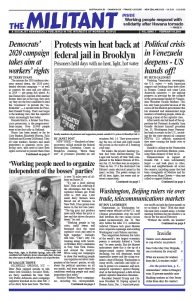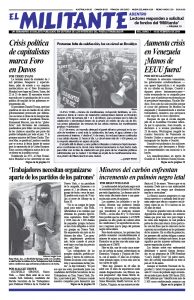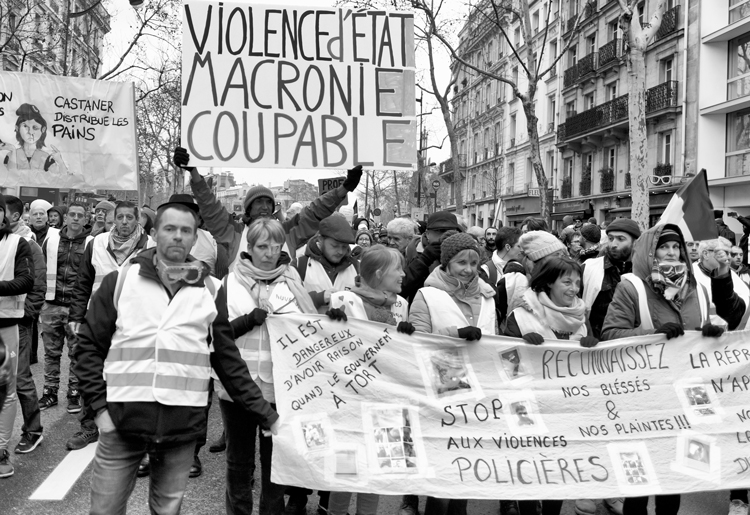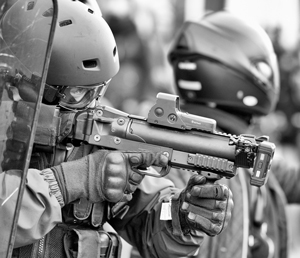PARIS — Over 60,000 workers, small proprietors and farmers marched throughout France Feb. 2 in the 12th weekly Saturday protest of the yellow vest movement. Over 13,000 marched here, triple that of the week before.
The march was to protest violent attacks by police on the yellow vests. The government has authorized cops to use riot control guns, tear gas and water cannons on protesters. Marchers paid homage to over 2,000 protesters wounded by cop attacks. The march was led by people injured in past actions, many wearing eye patches with target signs in solidarity with fellow protesters who’ve been shot in the eyes.
One of the marchers, Jerome Rodrigues, a leader of the yellow vests, was hit in the eye by a hard rubber bullet the week before. Doctors don’t know if they can save his eye.
This reporter was near Rodrigues as we marched to the Bastille. I saw the shooting. We had just passed a “snatch squad,” a special police unit for arresting demonstrators believed to be “ringleaders.” They recognized Rodrigues. After following him for awhile, they rushed forward and shot him in the eye from 15 meters (50 feet) with a special gun with a telescopic sight.
“They can amputate an arm, a leg, I won’t give up and I’m back in the protests as soon as I have recovered,” Rodrigues told the press a few days later. “We’ll carry this fight through for a better world, a more humane world.”
Wearing an eye-patch, he told the Paris rally his shooting was an act of “government violence.” He appealed for a calm, nonviolent march. Authorities mobilized 80,000 cops across the country, with 5,000 in Paris. Marchers had a determined, unrepentant spirit.
“I have a Red Cross first-aid diploma. At first I would come to the demonstration alone with a small first-aid kit,” Marie, a student participant in many yellow vest actions in Paris who didn’t give her last name for job reasons, told the Militant. She joined an organized group that “set up first-aid stations every 300 or 400 meters along the line of the demonstrations.” They care for the injured until more professional medical help arrives. “Last week I was shot in the back with a rubber bullet,” she said, despite wearing a cap with a red cross.
“This movement is legitimate. I see hardship and poverty everywhere,” she said.
This explosion of “people from nowhere” — like those the rulers call “deplorables” in the U.S. — began last November. They call French President Emmanuel Macron the “president for the rich” and demand steps to end the rulers’ assaults on working people that have made living conditions disastrous in smaller towns and rural areas.
Jobs have been slashed, small businesses crushed by the spread of big-box retailers. Macron’s tax on diesel fuel — crucial to get to work and to live in these areas — was the last straw.
The government and the press smear the demonstrators over violence during their actions. This is mostly caused by the cops and some by ultralefts who wait for opportunities to attack property and the police.
Cops have arrested some 6,000 demonstrators so far, and over 1,000 have already been tried and convicted.
The French Senate is debating a government-sponsored bill to undermine the right to protest. The draft bill allows for a cop perimeter around demonstrations to check identity papers and physically search protesters entering or leaving; a roster of people who have been barred from protesting; criminalizing face coverings at protests; and putting legal responsibility on march organizers to pay for any damages.



